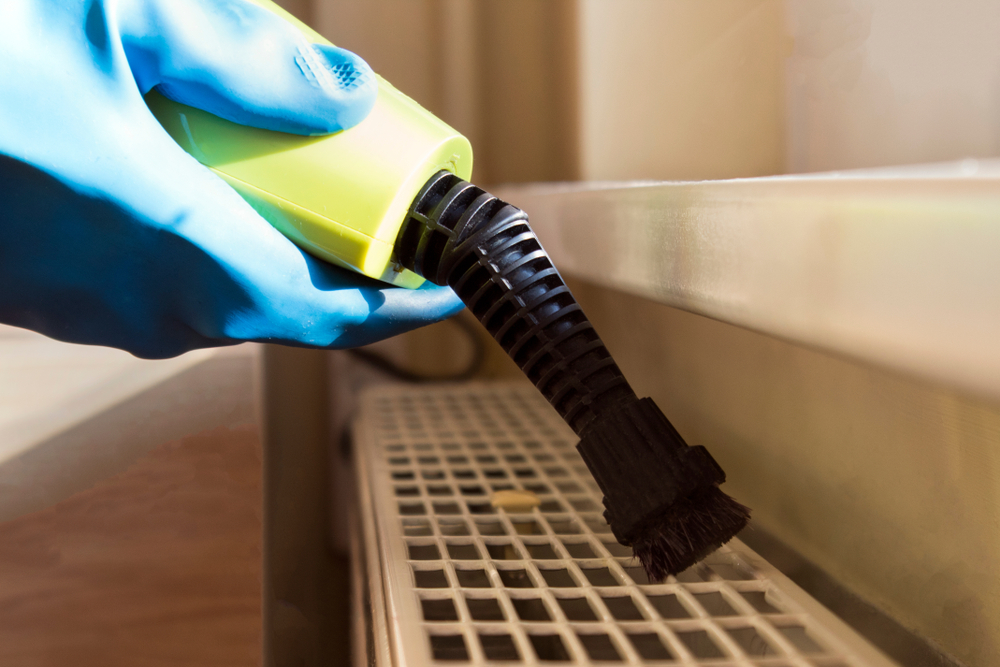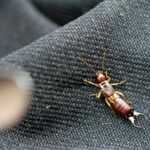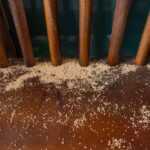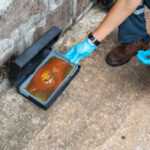Bed Bug Heat Treatment: Fast and Effective Solution
Say goodbye to bed bugs with heat treatment. This safe, chemical-free method wipes out infestations fast and keeps your home protected.
Effective Bed Bug Heat Treatment: Preparation and Results
Bed bugs are notoriously difficult to get rid of, but bed bug heat treatment offers a reliable solution. By raising the temperature of infested areas to lethal levels, this method kills all bed bugs, including their eggs, nymphs, and adults. It’s highly effective and often preferred over chemical treatments. This article explains how bed bug heat treatment works, how you can prepare your home, what technicians do during the process, and its overall effectiveness.
- Bed bug heat treatment effectively eradicates bed bugs at all life stages by raising temperatures to lethal levels, requiring careful preparation to allow heat penetration throughout the infested area.
- You must take safety precautions, including removing heat-sensitive items, pets, and clutter from the treatment area, to ensure the effectiveness and safety of the heat treatment process.
- While bed bug heat treatment generally offers a high success rate with immediate results, it can be more expensive than chemical treatments but typically requires only one application for effective elimination.
How Bed Bug Heat Treatment Works
Bed bugs are elusive creatures that hide in the smallest cracks and crevices, making standard pest control methods less effective. However, bed bug heat treatments tackle this problem head-on by using high temperatures to kill bed bugs at all life stages, including eggs, nymphs, and adult bed bugs. Technicians raise the ambient temperature of the infested area to lethal levels, ensuring they eradicate all the bed bug populations.
The science behind bed bug heat treatment is straightforward but effective. Bed bugs and nymphs die at temperatures around 118°F, while their eggs require exposure to at least 122°F to ensure effective elimination. Technicians use specialized equipment, including industrial heaters and high-powered fans, to elevate the temperature of the entire space. This equipment distributes heat evenly and reaches every nook and cranny where bed bugs hide.
The duration of the heat treatment varies significantly based on several factors, such as the size of the entire home, the severity of the infestation, and the structure’s ability to retain heat. Typically, technicians maintain these high temperatures for several hours to ensure they kill all bed bugs. They continuously monitor the heat treatment process to ensure the proper temperatures are reached and maintained in all areas, including hard-to-heat locations like wall voids and electric sockets.
Understanding how bed bug heat treatments work helps homeowners appreciate the precision and effectiveness of this method. Technicians achieve and maintain specific lethal temperatures to ensure complete eradication of bed bugs, even in difficult-to-reach spots such as cabinet doors, dresser drawers, and box springs.
Preparing Your Home for Heat Treatment
Preparation plays a key role in successful bed bug heat treatments. Before the process begins, you must prepare your home to allow heat to penetrate all areas where bed bugs hide. Excessive clutter and potentially infested items can restrict equipment placement, air movement, and heat penetration, which can cause treatment failure.
Start by decluttering your home, especially the rooms that technicians will treat. Remove unnecessary items and arrange furniture to allow proper air movement. For example, move beds at least two feet away from the walls, and remove all items stored under them. This arrangement allows the heated air to circulate freely and reach all the hiding spots where bed bugs might lurk, including under upholstered furniture and within soft materials.
Additionally, open all doors and drawers to ensure heat can enter and treat these spaces effectively. Pack clothing loosely in open weave laundry baskets or storage boxes to allow heat circulation during treatment. Avoid packing clothing in plastic bags as they trap heat unevenly.
These steps create the proper conditions for a successful full heat treatment, ensuring technicians expose all bed bugs to lethal temperatures.
Items to Remove Before Heat Treatment
To ensure safety and effectiveness, you must remove certain items from your home before the heat treatment begins. This includes any items that heat can damage or that pose safety risks.
Preparing and removing these items prevents heat damage and ensures a smooth heat treatment process.
Combustible Items
Combustible items pose significant risks during heat treatment and must be removed to prevent fire hazards. Examples include:
- candles
- alcohol
- aerosol products
- pressurized containers
These heat sensitive items can cause serious safety issues if left in the treatment area.
Removing all flammable chemicals and pressurized cans reduces the risk of explosions or fires during heat treatment. Additionally, secure or remove other heat-sensitive and delicate belongings such as vinyl records and picture frames.
These precautions help create a safe environment for effective heat treatment.
Electronics and Valuables
Electronics and valuables also need special attention before heat treatment. Remove batteries from sensitive items like laptops and unplug electronics to prevent heat damage. Avoid exposing most electronics to temperatures exceeding 150°F, as this can cause permanent damage. If you cannot relocate these items, cover them with heat-resistant materials.
Store valuable items such as family heirlooms, photographs, and other delicate belongings away from the treatment area in airtight bags or storage boxes. This protects your precious items from high temperatures.
Properly preparing and protecting electronics and valuables prevents heat-related damage during the bed bug heat treatment process.
Plants and Pets
High temperatures during heat treatment can harm plants and pets, so you must remove them from the premises to keep them safe. Relocate all pets, including fish, to a safe environment away from the treatment area.
Similarly, remove living plants such as potted plants and aquariums to prevent heat damage. Relocating pets and plants ensures their safety during an effective bed bug heat treatment.
What to Expect During Heat Treatment
During heat treatment, technicians set up large air movers and space heaters throughout the treated space to ensure effective heat circulation. They regularly adjust the equipment to heat all areas properly, reaching the lethal temperatures needed to kill bed bugs. This setup distributes heated air evenly, leaving no areas untreated.
Temperatures typically range from 135°F to 145°F, which instantly kills bed bugs at all life stages. Technicians continuously monitor these temperatures to ensure specific areas reach and maintain lethal levels.
The entire treatment usually requires several hours of active heating to be effective. Homeowners should stay away from their entire home for 6 to 9 hours during and after the treatment to ensure safety and allow technicians to complete the process without interruption.
Post-Treatment Steps
After heat treatment, follow several important steps to keep your home bed bug-free. Inspect belongings, including bedding and clothing, thoroughly upon re-entering to check for any missed bed bugs. Vacuum treated areas carefully, focusing on floors, furniture, and cabinet doors, then dispose of the vacuum bag outside to prevent re-infestation.
Wash and dry all fabrics from treated areas on high heat to eliminate any remaining bed bugs or eggs. Dry clothing on high heat for 30 minutes before sealing it in airtight bags to prevent bed bug reintroduction. Following these steps helps eliminate potential survivors and prevent future infestations.
Allow a specific waiting period before re-entering treated areas to ensure thorough elimination of bed bugs and eggs. Washing linens and using a protective mattress cover help maintain a bed bug-free environment. These post-treatment steps play a crucial role in the long-term effectiveness of heat treatment.
Effectiveness of Bed Bug Heat Treatment
Bed bug heat treatment achieves a remarkable success rate of 95-100% on the first visit, effectively targeting bed bugs in all life stages. This method reaches difficult areas where bed bugs hide, such as cracks, crevices, wall voids, and electric sockets, which sets it apart from chemical treatments. However, environmental complexities and heating system limitations sometimes allow some bed bugs to survive.
Various factors influence heat treatment effectiveness, including the heating system, structure size, heating duration, and technician performance. Proper heater placement is crucial for achieving lethal temperatures in all areas. Architectural complexities like drop ceilings may reduce heat treatment effectiveness.
Technicians should perform a follow-up inspection within a week to confirm no remaining bed bugs or bites. If new bed bugs appear after treatment, technicians must conduct additional treatments to eliminate them. Ignoring surviving bed bugs can lead to multiplying bed bug populations. Understanding these factors helps homeowners appreciate the thoroughness and precision required for successful bed bug heat treatment.
Comparing Heat Treatment to Chemical Treatments
When comparing heat treatment to chemical treatments, one significant difference stands out: heat kills bed bugs in all life stages, including eggs, while chemical treatments may not. Heat penetrates all hiding spots, making it more effective than chemical treatments’ targeted approach. This means heat treatment typically requires only one application, while chemical treatments often need multiple visits.
However, heat treatment costs about three times more than chemical treatments. Chemical treatments can work if the infestation is caught early, providing ongoing protection through residual effects. Chemical treatments may leave residues that affect those with sensitivities, while heat treatments leave no residues after the process.
In some cases, technicians combine heat treatment with residual insecticides such as non toxic pesticide dust to address potential survivors. Weighing the pros and cons helps homeowners make informed decisions about the best approach to eliminating bed bugs in their bed bug infestation.
Cost of Bed Bug Heat Treatment
The cost of bed bug heat treatment varies widely based on factors such as the treated area size and infestation severity. On average, professional bed bug heat treatment costs between $1,000 and $4,000. Treating a one-bedroom apartment ranges from $300 to $650.
Exterminators may charge about $200 to $400 per room for bed bug treatment, with emergency treatments adding $200 to $500. Regular visual inspections cost between $65 and $200, depending on the service.
Multiple extermination visits can cost around $415 to $625 each. Despite the higher upfront cost, heat treatment usually requires just one application to eliminate bed bugs, unlike chemical methods that often need multiple visits.
Safety Measures During Heat Treatment
Safety remains a top priority during heat treatment. Remove items that may melt or explode, such as pressurized cylinders and flammable chemicals, from the treatment area. Turn off air conditioners and fans before heat treatment to maintain process effectiveness. Remove pets from the treatment area to prevent harm from hot air blasts.
During heat treatment, temperatures can reach 120°F to 140°F, effectively killing bed bugs but requiring careful management of items vulnerable to high heat. One benefit of heat treatment is the absence of lingering chemical residues, making it safer for homes with children or pets.
Following these safety measures ensures a safe and effective bed bug heat treatment.
Benefits of Bed Bug Heat Treatment
Bed bug heat treatment provides immediate results by killing bed bugs at all life stages. Unlike chemical treatments that may require multiple applications, heat treatments typically achieve eradication with just one session. This immediate effect appeals to homeowners seeking quick solutions.
Additionally, heat treatments avoid harmful chemicals, making them safe for pest control, especially in homes with children or pets. The method also remains discreet, requiring no visible chemical sprays or barriers.
Choosing heat treatment offers a chemical-free, effective, and immediate solution to bed bug infestations.
Bed bug heat treatment effectively eliminates bed bugs at all life stages. By understanding preparation, the treatment process, and necessary post-treatment steps, homeowners can greatly improve their success chances. Heat treatment’s immediate results and chemical-free nature make it an attractive option.
Frequently Asked Questions
What temperature kills bed bugs?
Exposing bed bugs to 113°F for at least 90 minutes or 118°F for 20 minutes effectively kills them. Maintaining 118°F for 90 minutes ensures 100% mortality of bed bug eggs.
How many heat treatments are needed for bed bugs?
A single full heat treatment usually suffices if temperatures reach 118°F for at least 90 minutes, effectively killing adult bed bugs and eggs. Consistent heat exposure to this temperature is crucial for optimal results.
Are bed bugs still alive after heat treatment?
Heat treatment kills bed bugs because exposure to 118°F for 20 minutes suffices to kill adults, and 118°F for 90 minutes eradicates eggs. After proper heat treatment, bed bugs should no longer survive.
Does heat treatment for bed bugs really work?
Yes, heat treatment effectively eliminates bed bugs by exposing them to 113°F for 90 minutes or 118°F for 20 minutes, killing adults and eggs. Proper application ensures thorough eradication.
What should I remove from my house before bed bug heat treatment?
Remove combustible items, electronics, valuables, plants, pets, and other heat sensitive items before bed bug heat treatment to ensure safety and treatment effectiveness.



